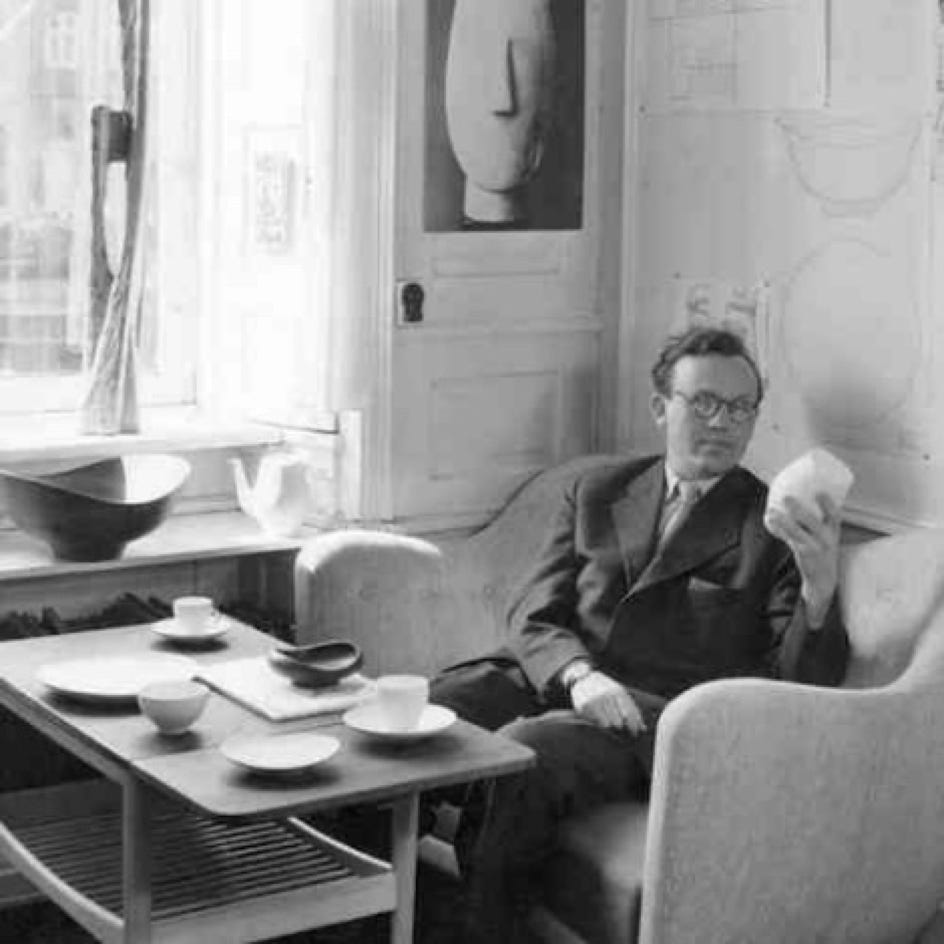15% off with DESIGN15


Design critics have described the Egyptian chair as a miraculous blend of ancient Egyptian design principles, modern rhythms and aerodynamics. The chair was first exhibited in Copenhagen in 1949 at the Cabinet Makers Guild exhibition, alongside the famous Chieftain Chair. Riding the wave of success from this exhibition, Finn Juhl made his international breakthrough and became the father of the famous Danish modern design style.
This chair is characterised by unique craftsmanship and is made with an oak or walnut frame and textile or leather upholstery. The Egyptian chair and the Chieftain chair are excellent examples of Finn Juhl's genius in his field and his characteristic way of creating a "room within a room". Many years later, Finn Juhl himself spoke of a visit to the Louvre Museum in Paris, where he was so fascinated by an ancient Egyptian chair that he "stole" its construction to create his own Egyptian chair.
Dimensions 55 x 56 x H89 cm – Seat height 45cm
Materials fabric or leather, walnut or oak

Egyptian chair
from
white oiled oak
oiled oak
oiled walnut
Examples :
Walnut
+ Walnut Elegance leather (leather price group 4)
Walnut
+ Watercolour Peacock (fabric price group 3)

As a teenager, Finn Juhl (1912-1989) wanted to become an art historian after having been fascinated by fine arts since childhood. His father prevented him from doing so and he studied architecture. Later, once his reputation as a furniture designer had been acquired, he would speak of himself as a self-taught man, certainly in reference to this thwarted vocation which forced him to make his intellectual journey alone. His very singular style owes much to this non-linear trajectory, with a very unacademic interpretation of art visible in his work. Finn Juhl began his studies in 1930, a key period that saw the birth of modern design and furniture.
His ultra-modern offices in the center of Copenhagen greeted visitors with a huge Japanese paper fish, a symbol of imagination. And rather than approaching furniture design from a functional, classical perspective, Finn Juhl approached his work as a sculptor. He sought beauty in volume and form, life and expressiveness. An approach that in the 1940's and 1950's was totally unprecedented. For Finn Juhl, it was clear that a piece of furniture could not be limited to a function, but also had to express an artistic sensibility.
While he remains world-famous for his furniture, Finn Juhl also designed several interior architecture projects and a few industrial products, including IBM typewriters. His greatest commercial success was with the Baker Company in the United States, which allowed him to mass-produce several pieces of furniture.
As an architect, he is known for the interior design of the United Nations Council in New York.